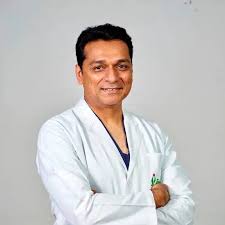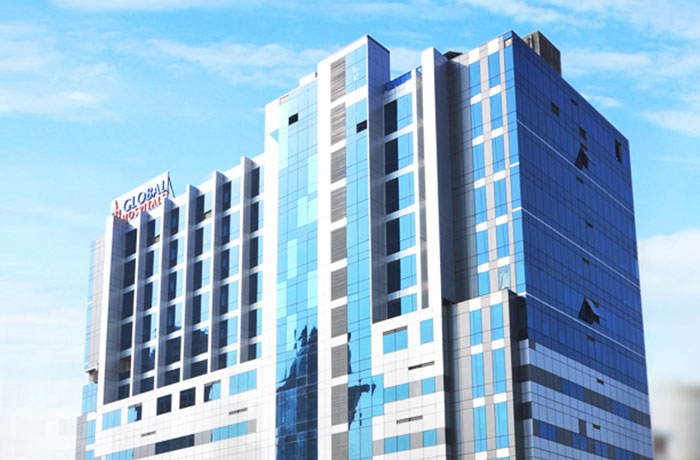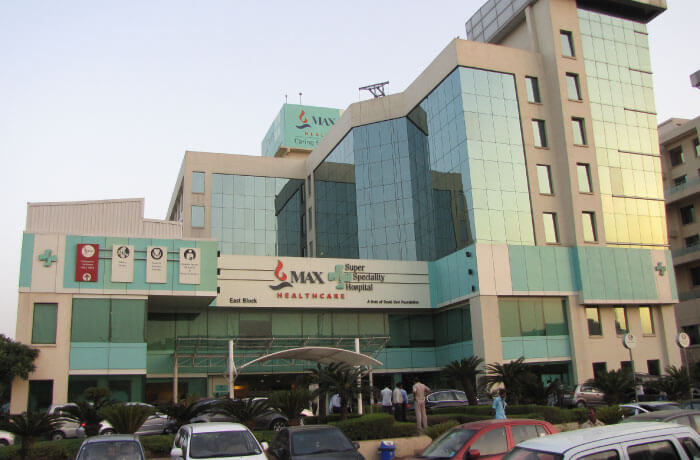Orthopaedic
Spinal Fusion Surgery Treatment
Spondylosyndesis
Spinal fusion (spondylodesis or spondylosyndesis) is a neurosurgical or orthopedic surgical technique that connects two or more vertebrae. This process can be done at any level in the spine (cervical, thoracic, or lumbar) and restricts any movement between the fused vertebrae. There are different types of spinal fusion and each technique involves the use of bone grafting either from the patient (autograft), the donor (allograft), or artificial bone substitutes for helping the bones to heal together.
What is Spinal Fusion Surgery?
Spinal fusion (spondylodesis or spondylosyndesis) is a neurosurgical or orthopedic surgical technique that connects two or more vertebrae. This process can be done at any level in the spine (cervical, thoracic, or lumbar) and restricts any movement between the fused vertebrae. There are different types of spinal fusion and each technique involves the use of bone grafting either from the patient (autograft), the donor (allograft), or artificial bone substitutes for helping the bones to heal together. Additional hardware like screws, plates, or cages is generally required for holding the bones in place while the graft fuses the two vertebrae together.
What are the reasons for the requirement of Spinal Fusion Surgery?
If medicines, physical therapy, and other treatments (like steroid injections) haven't helped the patient’s back pain, the surgery might be the best option. Doctors generally recommend it if they know exactly what's the source of the problem.
Spinal fusion might help the patients feel much better if their back pain is caused by:
- Degenerative disk disease: The space between disks narrows; occasionally they rub together spaces.

- Fracture: Spinal bone is broken
- Scoliosis: The spine curves abnormally to one side
- Spinal stenosis: Narrowing down of the spinal canal
- Spondylolisthesis: Forward shifting of a spinal disk
- Tumors or spine infection
- Deformities of the spine: Spinal fusion can be required for correcting the spinal deformities, such as a sideways curvature of the spine.
- Spinal weakness or instability: The spine may become unstable if there's abnormal or excessive movement between two vertebrae. This is one of the common side effects of severe arthritis in the spine. Spinal fusion can be required for restoring spinal stability in such cases.
- Herniated disk: Spinal fusion may be required for stabilizing the spine after the removal of a damaged disk.
Types of Spinal Fusion Surgery
There are various types of spinal fusion surgical procedure. The most commonly employed surgical techniques include the following:
- Posterolateral gutter fusion: The surgery is performed through the back
- Posterior lumbar interbody fusion (PLIF): The surgery is performed from the back and includes the removal of the disc between two vertebrae and inserting the bone into the space created between the two vertebral bodies.
- Anterior lumbar interbody fusion (ALIF): The surgery is performed from the front and includes the removal of the disc between two vertebrae and inserting the bone into the space created between the two vertebral bodies.
- Anterior/posterior spinal fusion: The surgery is performed from the front and the back.
- Transforaminal lumbar interbody fusion (TLIF): Like the PLIF, this surgery is also performed from the back of the spine
- Extreme Lateral Interbody Fusion (XLIF): An interbody fusion in which the procedure is being performed from the side
Procedure
After the surgeon makes the cut, he/she moves the muscles and structures to the side for viewing the spine. The joint or joints between the damaged or painful disks are being removed. He can use Screws, or pieces of bone (called a graft), rods can be used by the surgeon, these grafts can be from another part of the patient’s body for connecting the disks and keep them from moving. A bone graft that comes from the patient’s body is generally taken from their hip or pelvis. Bone from another person is known as donor graft. Some doctors place a substance known as the bone morphogenetic protein into the spine instead; this substance helps in stimulating bone growth. The surgery can take up to several hours.
Complication due to Spinal Fusion Surgery
Like every other surgery, spinal fusion surgery also comes with some type of risk. These have been linked to this type of surgery:
- Bleeding
- Blood clots
- Infection
- Pain
- Risks due to anesthesia
Other potential problems may include
- Nerve injury: Numbness and tingling in a leg, the patients might lose movement, but that’s very rare.
- Pseudoarthrosis: Sometimes the fusion doesn't work, after a few months, the patient’s back pain may return.
- Donor bone graft complications like tissue rejection or infection.
The patients can help prevent some of these complications by watching for the warning signs of infection. The patients must contact the doctors when having the following symptoms:
- A lot of redness, drainage by the wound or swelling,
- Fever over 100 degrees F
- The increment in the pain
- Shaking chills
Recovery after Spinal Fusion Surgery
After surgery, the patients will be in the hospital for several days. The duration of the patients depends on many things, like the general fitness level and if the patients have any other medical conditions, they might require to stay more. During this time, the patients will be connected to machines that monitor their heart and make sure that their body is fine. The patients will also have a lot of tubes attached to them
One, called an IV, goes in their arm to give them fluids, pain medicines and sometimes antibiotics. Some people get pain medicines through a tube in the back, this is known as an epidural catheter. Another tube, also called a catheter, is connected to where urine normally leaves the body. The patients will have this for the first few days so that they don't have to get up to go to the bathroom. The patients might find it unpleasant, or they might not even feel it. But it's important that the patients remain still so that their back can heal properly.
Before the doctor sends the patients back to their home, the patient will have spinal X-rays to make sure that the fusion is doing fine. The patient will have to return to have their stitches removed in about 10 days. After that they will have follow-up appointments, generally in about 4 to 6 weeks, 6 months, 12 months and 24 months. Recovering from back surgery takes work and commitment. It could take 6 months to a year for the back to fully heal. The patients need to stick with physical therapy after they leave the hospital. The doctor will tell the patients how often they need to go.
The intricate and fragile structure of the human spine is the foundation of our body’s movement and stability. It is made up of harmoniously cooperating vertebrae, discs, nerves, and supporting muscles. The treatment of spinal disorders and illnesses has been revolutionized by the tremendous metamorphosis that spine surgery has undergone over the years. This development has had a significant impact on the medical environment for many people with spinal problems.
The field of spine surgery in India has advanced significantly, moving from open surgeries to minimally invasive techniques and state-of-the-art robotic technologies. This advancement promotes quicker recovery times and less postoperative discomfort in addition to improving patient outcomes. Come along on a thorough investigation into spine surgery with us on this narrative journey.
Need for spinal surgery
Some conditions that require spinal surgery are as follows:
- Herniated Disc: A condition where a disc in the spine bulges out and presses on nerves, causing pain, numbness, or weakness.
- Spinal Stenosis: A narrowing of the spaces within the spine, which can put pressure on the spinal cord and nerves.
- Degenerative Disc Disease: The breakdown of spinal discs, leading to pain and reduced function.
- Scoliosis: A sideways curvature of the spine that can sometimes require surgical intervention.
- Spinal Fractures: Broken vertebrae due to trauma or osteoporosis.
- Spinal Tumors: Abnormal growths in or around the spinal cord that may need to be surgically removed.
- Spondylolisthesis: A condition in which a vertebra slips forward over the bone below it.
- Chronic Back Pain: In cases where non-surgical treatments have failed to relieve symptoms.
- Spinal Infections: Severe infections like osteomyelitis or discitis that might necessitate surgical debridement or stabilization.
Types of spinal surgeries in India
The different types of spinal surgeries performed in India are:
- Laminectomy: To relieve pressure and provide space within the spinal canal, this treatment involves removing the laminae, a tiny bony plate on the back of the vertebrae.
- Laminotomy: To relieve pressure, a portion of the lamina, or vertebral arch, covering the spinal cord is removed during this treatment.
- Discectomy, also known as microdiscectomy: This treatment relieves pressure on the compressed nerve by removing herniated intervertebral discs.
- Foraminotomy: This is a surgical operation where tissue or bone is removed at the neuroforamen, the route where the nerve roots leave the spinal column and split off from the spinal cord.
- Spinal Fusion: It is a surgical procedure in which a bone transplant is used to fuse two vertebrae together.
- Disc Replacement: As an alternative to fusion, an artificial disc is used to replace the injured one in this surgery.
Spinal fusion
Spinal fusion is a surgical procedure used to treat spine problems and is carried out with an intention to join two or more vertebral bodies. It fixes the bones so that they can’t move back and forth to each other, and this would minimize the pain. Lumbar fusion is commonly performed to address spinal diseases for example, disc degeneration, trauma, and congenital or idiopathic lordosis.
Other names for spinal fusion operation are:
- Anterior Spinal Fusion
- Arthrodesis
- Posterior Spinal Fusion
- Vertebral interbody fusion
Procedure for fusing vertebrae
- In performing this process, the surgeon applies bone grafts together with metal rods, screws, or plates to join the vertebrae.
- The grafts act as the filler material between the vertebrae and eventually become representative with the bones, thereby creating a single bone out of the two.
- This procedure denies movement between the vertebrae and relieves pain resulting from instability or pressure on nerves.
Spinal decompression
Spine decompression surgery is intended to reduce the pressure on the spinal cord and nerves. Often this pressure comes from a herniated disc, spinal stenosis or bony spurs. This treatment includes decompression, which can involve taking out parts of the bone or disc that put pressure on the nerve and can cause symptoms such as pain, tingling, and weakness.
Scoliosis operation
A scoliosis operation is a unique procedure that is focused on correcting bends in the backbone. Scoliosis affects teenagers and, if not treated, leads to significant abnormalities in the spinal column and pain. It is commonly associated with spinal fusion, and occasionally employs rods or screws to rebuild the appropriate spine alignment. This operation not only beautifies the spine but also stops the further development of the curvature.
Recovery after spinal operation
It is typical to have pain, weakness, and numbness during the healing phase. For seven to ten days following the incision, you can also have pain and swelling.
Following are some safety precautions that your surgeon might recommend:
- After surgery, refrain from driving for at least two weeks.
- For more than six weeks following surgery, refrain from lifting large objects, bending, twisting, and turning, as well as climbing.
- Alcohol and smoking should be abstained since they hinder the healing process.
- Before you do any physical activities, such as cleaning, long walks, or climbing stairs, talk with your surgeon.
- Speak with your doctor if you have a fever that is higher than 101°F, drainage from a wound, a decrease in bowel movements, or if taking medication does not relieve your pain.
- In order to guarantee a quick recovery and increased strength, your surgeon might also start you on a physical therapy and exercise regimen six weeks following the procedure.
- For their spinal surgery to be successful, patients must adhere to all of the lifestyle modifications that the surgeon suggests.
Success rate of spine surgery in India
India has an amazing success record when it comes to spine surgery procedures, which is mostly due to its renowned facilities and highly qualified medical professionals. This has drawn interest from people not only in India but also from the US, Canada, the UK, and other countries, making India a desirable destination for those looking for high-quality healthcare at a fair price.
Best hospitals for spine surgeries in India
- Fortis Memorial Research Institute, Gurgaon
- Fortis Hospital, Shalimar, New Delhi
- Medanta The Medicity, Gurugram
- Artemis Hospital, Gurugram
- Max Hospital, Delhi
- BLK-Max Super Speciality Hospital, Delhi
- Apollo Hospital, Delhi
- Marengo Asia Hospital, Gurugram
Best doctors for spine surgeries in India
- Dr. Sandeep Vaishya
- Dr. Sonal Gupta
- Dr. Sudhir Dubey
- Dr. SK Rajan
- Dr. Arun Saroha
- Dr. Puneet Girdhar
- Dr. Rajendra Prasad
- Dr. Rajesh Verma
FAQ
1. What is the duration of hospital stay required for spine surgery in India?
- Depending on the procedure you have, you might have to stay in the hospital for four to eight days. It is advisable to remain in India for a minimum of one week to facilitate the resolution of any possible issues.
2. What are the benefits of minimally invasive spinal surgeries?
- Muscles and other adjacent systems sustain less injury with minimally invasive spine procedures (MISS).
- Instead of making one huge incision, the surgeon does several minor ones during these procedures.
- Less scarring is an additional advantage of these procedures.
3. How can I schedule or book an appointment for spinal surgery in India?
- We will assist you in getting expert advice and the best treatment from a panel of specialists. You can contact us via phone at +91-9289678787 or email us at care@getwellgo.com
TREATMENT-RELATED QUESTIONS
GetWellGo will provide you end-to-end guidance and assistance and that will include finding relevant and the best doctors for you in India.
A relationship manager from GetWellGo will be assigned to you who will prepare your case, share with multiple doctors and hospitals and get back to you with a treatment plan, cost of treatment and other useful information. The relationship manager will take care of all details related to your visit and successful return & recovery.
Yes, if you wish GetWellGo can assist you in getting your appointments fixed with multiple doctors and hospitals, which will assist you in getting the second opinion and will help you in cost comparison as well.
Yes, our professional medical team will help you in getting the estimated cost for the treatment. The cost as you may be aware depends on the medical condition, the choice of treatment, the type of room opted for etc. All your medical history and essential treatment details would be analyzed by the team of experts in the hospitals. They will also provide you with the various types of rooms/accommodation packages available and you have to make the selection. Charges are likely to vary by the type of room you take.
You have to check with your health insurance provider for the details.
The price that you get from GetWellGo is directly from the hospital, it is also discounted and lowest possible in most cases. We help you in getting the best price possible.
No, we don't charge patients for any service or convenience fee. All healthcare services GetWellGo provide are free of cost.
Top Doctors for Orthopaedic
Top Hospitals for Orthopaedic
Contact Us Now!
Fill the form below to get in touch with our experts.

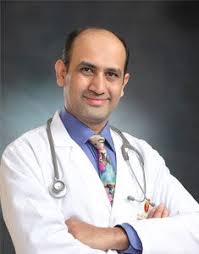
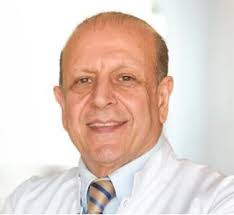
.jpg)
